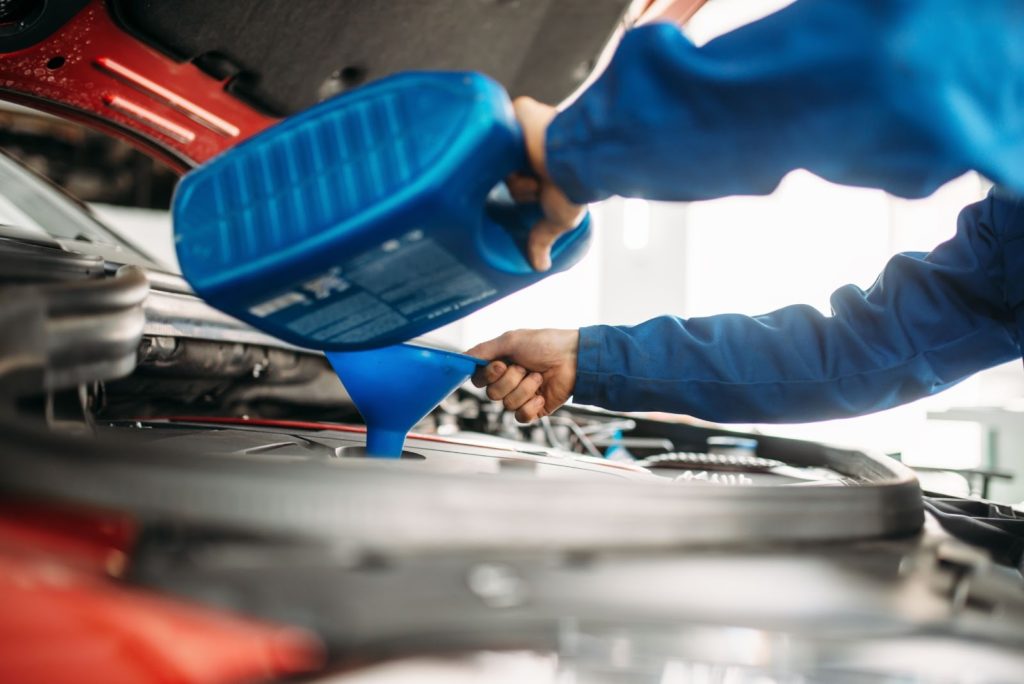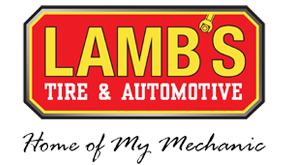Oil Change Service: A Comprehensive Guide To Oil Changes

You count on your vehicle to get you from point A to point B daily. Its ability to do this depends on the engine and its connected components working smoothly. Your engine’s oil plays a crucial role in this. That’s why it is so important to make sure your vehicle has clean motor oil, allowing it to do its job properly. This is where regular oil change service comes in.
Including an oil change in your preventative maintenance routine is one of the easiest and least expensive ways to extend the life of your engine. But, questions like when to have it changed or what type of oil to use can make things confusing fast. This guide covers what you need to know about a car oil change and will help clear up some of the confusion.
What Happens During an Oil Change
You know that an oil change is vital to keeping your engine running in optimal condition and that it involves putting new, clean oil in the vehicle. But, do you know exactly what happens during an oil change service?
No matter if you are getting a conventional oil change or a full synthetic oil change, the service itself will be the same (the only difference is the type of oil you select). Here is exactly what happens during a full-service oil change:
- Oil level and condition are checked: The engine’s current oil level and the condition of the existing oil will be checked to indicate what condition other components may be in. Low oil levels can sometimes point to a leak that may also need to be addressed.
- Old oil is drained out: Your vehicle will be lifted so that the technician can access the oil pan and oil drain plug at the bottom of the engine. The drain plug will be removed and the old oil will be drained out of your engine and properly disposed of.
- Removal of the old oil filter: Oil filters don’t last forever and should be replaced at each oil change. So, once the old oil has been drained out, your old oil filter will be removed and properly discarded.
- Installation of a new oil filter: After removing the old filter, the technician will put the drain plug and oil pan back into the proper place and make sure all of the components surrounding the oil filter are clean and free of old, dirty oil. The gasket on the new oil filter will then be lubricated, the new filter will be installed, and the filter will be primed with new oil.
- New oil is put into the vehicle: After the new filter is in place, depending on the type of vehicle/engine, up to 5 quarts of new oil will be poured into the engine.
- Lubrication of chassis: Once the new oil and oil filter is in place, parts of the vehicle’s chassis that frequently rub together will be lubricated, particularly parts close to the tires and those involved with controlling and steering the vehicle. This prevents premature wear on parts due to excess friction.
- Multi-point inspection: The technician will then perform a multi-point vehicle inspection. This creates the opportunity to catch any other issues that may be present before they can turn into big problems, as well as to top off the vehicle fluids, as needed.
Types of Motor Oil
Not all motor oil is created equal. Several different types of oil can go into an engine. They all have different levels of viscosity (thickness), providing varying levels of engine protection, and differing in cost. The four types are:
Conventional Oil
The term “standard oil” refers to conventional oil, which is a completely natural crude mineral oil. Though it is partially refined to improve its viscosity and protective properties, it is not as refined as other types of oil.
Conventional oil is the most budget-friendly option to protect your engine and is still effective at helping keep your car running smoothly. But, since it is not as refined, it will not provide the same levels of performance that you can get from synthetic oils and will become dirtier and sludgier quicker.
Full-Synthetic Oil
Alternatively, synthetic oil is highly refined and entirely manufactured in a lab or factory. This type of oil provides the highest level of engine protection. Because of its highly controlled manufacturing process and stringent standards, this oil contains the best elements of oil and additives.
In comparison to conventional oil, full-synthetic motor oil will generally be more expensive. For a synthetic oil change, you can usually expect to pay an extra $20 to $40, depending on how much oil your vehicle requires. But, synthetic oil lasts longer and it can also endure longer mileage intervals.
Synthetic Blend Oil
Combining the best aspects of both worlds, synthetic blend oil is a hybrid mixture of both conventional oil and full synthetic oil. This oil captures some of the benefits of both types of oil.
Synthetic blend oil provides better engine protection and performance than conventional oil, but not quite as much as full-synthetic oil. It will also last slightly longer than conventional oil. When it comes to cost, synthetic blend oil is usually more affordable than full-synthetic, but slightly more expensive than conventional oil.
High-Mileage Oil
Similar to synthetic blend oil, high-mileage oil was created specifically for engines with more than 75,000 miles. This oil contains unique additives that provide extra protection for older engines, while also preventing oil evaporation and improving overall performance. These additives include specialized cleansers, seal conditioners, viscosity modifiers, and anti-corrosion agents.
Engines with higher mileage battle increased oil burn-off and corrosion, which can lead to increased engine wear. So high-mileage oil offers the extra protection needed to help extend the life of the engine.
How Frequently You Should Have Your Vehicle’s Oil Changed
The recommended service routine will vary depending on the type of vehicle and driving habits. Your vehicle’s owner’s manual is the first place to look for the manufacturer’s suggested oil change schedule. Recommendations can range from every 3,000 to 10,000 miles under normal driving conditions.
As we mentioned above, the type of motor oil being used also impacts the frequency of how often you may need an oil change. For example, if your engine has full synthetic oil, oil changes will be less frequent than with conventional oil and will usually need to be done every 5,000 to 7,500 miles.
But, your engine’s oil can lose its effectiveness even faster if your regular driving includes:
- Frequent short trips or stop and go traffic
- High-mileage driving
- Higher temperatures (like we experience here in Texas)
- Hauling heavy loads or towing frequently
Here at Lamb’s Tire & Automotive, we recommend bringing your vehicle in for an oil change every 3,000 to 5,000 miles. This ensures your engine’s oil is performing at its best and that any minor issues are caught before they can become big problems.
Make sure to check out our latest oil change coupons to help make your service even more affordable.
Keep Your Car Running Its Best With Top-Quality Oil Changes
At Lamb’s Tire & Automotive, we can answer any questions you may have about an oil change, as well as any other auto services. Our ASE-certified master technicians can also help determine the type of oil and service schedule that is best for your vehicle.
Looking for an oil change in Austin? We’re your answer. Drivers throughout Texas trust the Lamb’s Tire & Automotive team for expert vehicle maintenance and repair at the best prices, all backed by unmatched customer service.
Schedule your appointment online today
Oil Change FAQ
Should I Get an Oil Change Service for My Car Once a Year, or Should It Be More Frequent?
The best source of information is the owner’s manual for your car. The manual will set out suggested timelines for oil changes and many other recommended services for your car.In general, we suggest that you schedule an oil change every 3,000 miles or three months, whichever comes first. Some other factors to consider include:
- The type of oil you use: Synthetic oil doesn’t need to be changed as often as conventional oil.
- Your driving habits and needs: Towing or carrying heavy loads or making frequent short trips degrades the oil quality faster.
- Climate: Higher temperatures (or any extreme climate) will cause the oil to wear out more quickly resulting in more frequent oil changes.
Many vehicles today have built-in sensors that remind you when a service is due. Don’t ignore them! They keep track of the miles driven and can even sense driving conditions.
Discuss your car’s requirements with one of the oil specialists at Lamb’s Tire & Automotive. Along with the manufacturer’s recommendations and knowledge of your car, they will help you set up an oil change schedule.
Be sure to check out our latest oil change specials and coupons!
What Other Signs Alert Me That It’s Time for an Oil Change?
It’s good practice to check your own oil in between scheduled services at Lamb’s Tire. Pay attention to unusual or new noises, smells, or warning lights. Make an appointment for a diagnostic check if you see, hear, or smell:
- Thick and/or dark oil
- Knocking or ticking noises coming from the engine
- The oil change light is on
- Blue exhaust smoke
- Oil smell within the cabin
Maybe you have missed a scheduled oil change. Don’t take chances if any of these signs appear. Schedule an oil change as soon as possible to protect your engine from further damage.
How Do I Check the Oil in My Car Myself?
Here is how to check the oil in your car:
- Let the car cool off first, including the dipstick.
- Pull the dipstick out and wipe it off with a cloth.
- Put the dipstick back in, making sure it’s completely in again.
- Pull it back out and look at the oil level on the dipstick.
- Look at the oil mark on the dipstick and check it against the HIGH and LOW oil level marks.
- Also, look at the color of the oil. If it is milky colored or you can see small bits of metal in the oil, get your car to a mechanic.
- Add oil if necessary (but keep in mind that “topping up” the oil isn’t a replacement for changing the oil).
If the oil level is very low, it’s best to take your car into a Lamb’s Tire location and have their technicians check for leaks.
Is Synthetic Oil Really Better than Conventional Oil?
Yes, synthetic oil is better for your car’s engine. Conventional oil does provide adequate lubrication performance, but it doesn’t provide the overall engine performance and protection provided by synthetics.
Full synthetic oil is manufactured in a lab or factory. It isn’t made of crude oil that comes out of the ground like conventional oil. Synthetic oil withstands high temperatures, resists breakdown, and lasts longer than conventional oil. It gives the highest level of protection to your car’s engine.
A full synthetic oil change will cost more than a conventional oil change, but you won’t have to get it changed as often.
Can I Switch from One Kind of Oil to Another?
What Kind of Oil Should I Put in My Car?
As always, check the owner’s manual for your car. This will outline which oil is best for the engine in your make and model. Here are some other considerations:
- What type of vehicle do you drive? A sports car’s engine will perform best with an oil designed for it. But if you own a truck for hauling and towing heavy loads, the oil used has to protect the engine from the increased strain placed on it.
- How old is the car and what is the mileage? These factors will make a difference too. Newer cars today often require synthetic oil, but an aging, high-mileage engine will require an oil made to protect older components that are wearing down.
- How do you use the vehicle and what is the climate where it is used? Extreme temperatures may mean your car requires different oil in different seasons. Short trips and pulling heavy loads put other demands on an engine. Each of these factors must be considered when choosing an oil.
Is It Necessary to Change the Oil Filter with Every Oil Change?
Would you take a shower and put the same clothes back on? Probably not. This is the same case for a clean oil filter. Why put clean oil in the engine but leave a dirty filter in the car? Over time, a filter becomes so dirty that the oil trying to circulate around the system can’t get through. A filter blocked with debris and sludge will only lead to an overheated engine and that leads to breakdowns and expensive repairs.
Do Older Cars Need More Frequent Oil Changes?
Yes. Engine wear over time leads to the need for more frequent oil changes. The longer an engine operates, the greater the difference between optimal performance and actual performance. More oil is needed because of this, which simply means the oil needs to be changed more often.
The type of engine in a vehicle often determines the need for more frequent oil changes, too. For example, a diesel that is operating under high pressure and temperature generates special emissions and other engine byproducts that can contaminate oil. More frequent oil changes are needed to protect the engine from premature wear.
What Oil Is Best for a High-Mileage Car?
What Happens If You Don’t Change the Oil in Your Car?
Oil lubricates and protects all the moving parts in your car’s engine. Getting the oil changed is the most economical way to keep your car running reliably and at peak performance for the longest period of time.Here are some of the consequences of not keeping up with regular oil changes:
- A VOIDED VEHICLE WARRANTY
A failure to have your car serviced according to factory specifications could void the warranty. We will set a schedule that works for you and keep documentation of all your oil changes. - POOR ENGINE PERFORMANCE
Clean oil provides both better lubrication as well as a cleaner engine. An oil and oil filter change removes additives, detergents, and dispersants that transport dirt and debris into the fuel filter. A clogged filter puts all this grime back through the engine. The engine works harder to get through all this muck and that affects the car’s performance and gas efficiency. - COMPLETE ENGINE FAILURE
If sludge is allowed to circulate through your engine long enough, the engine will overheat. This leads to a blown gasket or the engine seizing up completely. The investment you made in purchasing the car is now gone.
Is It Easy for Me to Change My Car’s Oil Myself?
Yes, but be careful. You risk missing an oil leak, using the wrong filter or oil, or having trouble finding the oil pan bolt and filter. An oil change is a messy task and takes longer than you would expect. If you do change the oil yourself, make sure you have the right equipment. Any time you are in a vehicle, disaster can strike.
Don’t forget: You will have to dispose of the used oil according to local laws.
What Happens to Used Motor Oil?
Thank you for caring about our environment! This is a good question.
Used motor oil should be recycled and reused. If you change the oil yourself, be careful handling and disposing of your drained oil. Improper handling or disposal from just one oil change can contaminate the freshwater supply for up to 50 people.
You will need to drop off used oil at local auto repair shops, waste collection sites, or government waste sites for recycling. Drain and recycle used oil filters too. You can drop them off at the same site as the used oil.
We take pride in properly disposing of all used motor oil at Lamb’s Tire & Automotive. Bring your car or truck to us and let us take care of these details as we help you protect the engine in your vehicle.









